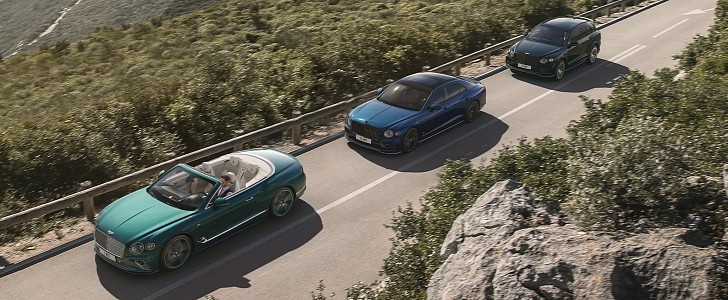Bentley made more money in the first quarter of the year compared to the same period of 2021 despite selling fewer cars. And it’s obvious how they achieved that, isn’t it?
According to the British marque, owned by the Volkswagen Group, the revenue per car sold went up from €184,000 ($194,074) to €212,000 ($223,607). Mulliner and Speed derivatives sparked “significant interest,” the automaker says. The firm’s revenue increased from €578 to €813 (~$610-857.5 million), their operating result from €65 to €170 million ($68.5-180 million), and their return on sales saw a boost from 11.2% to 21%.
Save for the European and Asia-Pacific markets, their overall sales dropped. In the Old Continent, they sold 706 vehicles, up 38% from the 524 units in Q1 2021, and in Asia-Pacific, they rose by 19% from 310 to 369 examples. In its home market, Bentley parted ways with 368 cars, a 30% increase. In the Americas, Mainland China, including Hong Kong and Macau, and the Middle East, they shipped 832 (-9%), 761 (-29%), and 167 (-38%) vehicles. In total, Bentley sold 3,203 cars in Q1, 2022, down 5% overall from the 3,358 sold in the first quarter of last year.
“Despite a challenging global environment, we started 2022 where we left off in 2021, with another solid set of financial figures,” said CEO Adrian Hallmark. “This has been driven by strong revenue growth, thanks to our fresh and exciting new model portfolio, a significant increase in demand for Bentley’s personalization program, and strong growth in sales of our new hybridized products. The combined effect of this revenue together with a restructured business model has enabled us to deliver industry competitive returns on sales and investment.”
These numbers “reinforce Bentley’s ground-breaking Beyond100 strategy,” according to the car manufacturer, which will see them reinvent their products in order to achieve carbon neutrality by the end of the decade. Before that happens, though, they plan to sell more hybrids than ever in 2022, and they certainly have enough time for that.
Save for the European and Asia-Pacific markets, their overall sales dropped. In the Old Continent, they sold 706 vehicles, up 38% from the 524 units in Q1 2021, and in Asia-Pacific, they rose by 19% from 310 to 369 examples. In its home market, Bentley parted ways with 368 cars, a 30% increase. In the Americas, Mainland China, including Hong Kong and Macau, and the Middle East, they shipped 832 (-9%), 761 (-29%), and 167 (-38%) vehicles. In total, Bentley sold 3,203 cars in Q1, 2022, down 5% overall from the 3,358 sold in the first quarter of last year.
“Despite a challenging global environment, we started 2022 where we left off in 2021, with another solid set of financial figures,” said CEO Adrian Hallmark. “This has been driven by strong revenue growth, thanks to our fresh and exciting new model portfolio, a significant increase in demand for Bentley’s personalization program, and strong growth in sales of our new hybridized products. The combined effect of this revenue together with a restructured business model has enabled us to deliver industry competitive returns on sales and investment.”
These numbers “reinforce Bentley’s ground-breaking Beyond100 strategy,” according to the car manufacturer, which will see them reinvent their products in order to achieve carbon neutrality by the end of the decade. Before that happens, though, they plan to sell more hybrids than ever in 2022, and they certainly have enough time for that.








